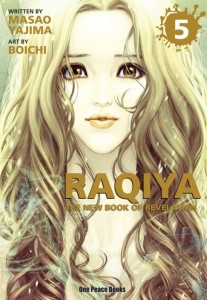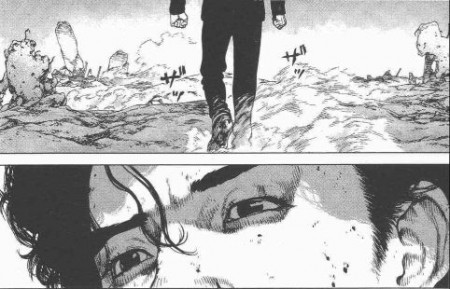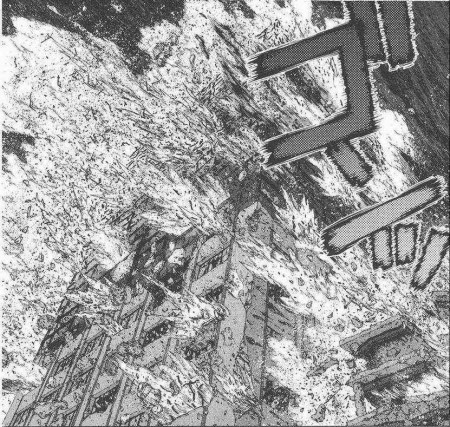Wrapping Up Raqiya
Masao Yajima & Boichi’s cataclysmic manga tale of clashing religious beliefs upon the advent of a teen girl’s manifestation of godlike powers comes to a compelling and satisfying, although not entirely expected, conclusion in volume 5. The ending that readers get is gigantic in scope and awesome in spectacle, and also entirely predicated on story developments that have occurred earlier in the narrative; however, the climax still manages to sidestep a predictable and expected denouement, for better or worse.
Raqiya has spent four volumes nurturing the enigma of Luna Hazuki’s nature, whether she is the second-coming of the Catholic God or whether she is the Anima Mundi goddess worshiped by Gnostics and deemed the Catholic Antichrist. The miniseries has also devoted a lot of effort to developing a tentative love triangle between Isa, who wholeheartedly loves Luna, Toshiya who is conflicted by his emotional attraction to Luna and his rational opposition to her existence, and Luna herself whose affections for both young men waver from friendship to love. The final volume of Raqiya wraps up all of its loosely connected plot threads not necessarily by addressing each of them but by bringing them all together in the end. Rather than distinctly delineate Luna’s true nature, the concluding book offers a heretofore unconsidered third option. After very briefly depicting Toshiya’s fate in volume 4, the final volume simply excludes him entirely in order to depict a culmination of Isa & Luna’s relationship that isn’t strictly impromptu but feels as if it is. Being a story about the power of God, the story has skirted the possibility of a deus ex machina situation from its outset, so when the occasion does occur in the final volume, it seems simultaneously natural and unexpected.
While the final volume brings together all of its remaining characters and plot threads, much of the final book exists as a showcase for Boichi’s phenomenal graphic art. Much of the book literally depicts the occurrence of the end of the world that loomed throughout the story. Multiple giant panels and splash pages illustrate cataclysmic global destruction on a scale that’s breathtaking for both its scope and its visual detail. Reminiscent of amazingly detailed depictions of collateral damage in Katsuhiro Otomo’s classic Akira manga, Boichi draws awesome depictions of catastrophic destruction with amazing attention to detail. The spectacular visual art in volume 5 alone justifies recommending the book. Like previous volumes, the concluding book includes a few panels of graphic, non-sexual nudity and gruesome visceral gore. One Peace Book’s presentation of volume 5 has crisp, clean printing with solid monochrome reproduction and a natural English translation free of typos and errors.
Despite being steeped in Christian mythology, Raqiya: The New Book of Revelation has never been a story likely to please readers demanding and orthodox religious tale. Raqiya is an adult fantasy that uses Christianity as a backdrop for a speculative fantasy/action/horror/science-fiction story. Raqiya is a tightly woven, concise story that knows when to escalate its scope and pace and manages to conclude effectively, albeit unpredictably and arguably just a bit abruptly. Readers that reach volume 5 are treated to a marvelous visual spectacle and a climactic conflict on a literally cosmic scale that manages to always stay personal and comprehensible, without falling into the cliché pattern of becoming abstract and obtuse. The ending doesn’t exactly play out the way readers may expect, given the plot developments leading up to the final volume, but at the same time the ending isn’t improvisational. Reaction to the concluding volume will vary according to individual readers’ willingness to embrace the direction that the ending takes, but readers can rest assured that the ending is solid and definitive, capping off a mini-series that has been compelling and intriguing.







